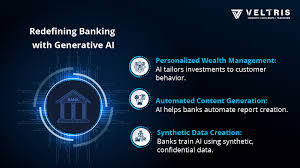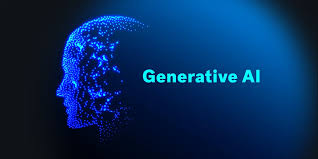Banking is no longer what it used to be. The days of long queues, endless paperwork, and generic customer service are fading fast. Enter generative AI: the quiet disruptor that’s reshaping how banks operate and how customers experience finance. This technology doesn’t just automate tasks—it thinks, learns, and adapts, making banking feel more personal and responsive than ever before. And let’s be honest, in a world where people want instant answers and tailored experiences, that’s exactly what we’ve been waiting for.

AI-Powered Customer Service: Smarter, Faster, Human
Waiting on hold? Navigating endless phone menus? Those frustrations are becoming relics of the past. Generative AI brings customer service into the 21st century. No more scripted chatbots that respond like robots—they now understand context, read the mood of the conversation, and can give advice that feels surprisingly human.
“Customers want interactions that feel real, not robotic,” says fintech consultant Laura Chen. “Generative AI makes it possible to deliver that at scale, without needing hundreds of extra staff.”
And it doesn’t stop there. AI can predict what you might need next. Frequently transferring money internationally? Expect suggestions on better rates or alerts about promotions before you even ask. It’s almost like the bank is reading your mind—without being creepy, of course. This level of personalization builds trust and loyalty in ways that old-school banking never could.
Risk Management Gets a 21st-Century Makeover
Behind the scenes, AI is also quietly revolutionizing risk management. Traditionally, banks relied on historical data and rigid rules. Generative AI, however, sifts through massive datasets in real time, spotting patterns and threats that humans might miss.
Fraud detection, credit risk assessment, market volatility monitoring—they’re all faster, sharper, and more predictive thanks to AI. Generative AI can even simulate “what-if” scenarios, allowing banks to stress-test strategies dynamically.
“Risk isn’t just about reacting anymore,” notes banking strategist David Alvarez. “It’s about anticipating problems before they even appear. That’s a huge leap for stability and customer confidence.”

The Human Side of AI: Challenges and Ethics
Of course, it’s not all smooth sailing. Integrating AI comes with challenges—privacy concerns, algorithmic bias, and regulatory hurdles top the list. AI is only as good as the data it learns from. Bad data? Bad decisions. Missteps in credit scoring or customer recommendations can erode trust fast.
Regulators are watching closely. The EU AI Act, for example, imposes strict rules for high-stakes sectors like banking. In the U.S., agencies are pushing for transparency, accountability, and fairness. Banks need to innovate carefully, balancing speed and efficiency with ethics and responsibility.
Transparency isn’t just a regulatory tick-box—it’s about keeping customers comfortable. People need to know their AI-powered financial advisor isn’t making decisions behind a curtain. Human oversight remains essential.
Humans and AI: A Powerful Partnership
Generative AI doesn’t replace people; it empowers them. Repetitive tasks are automated, freeing employees to focus on complex problems, strategy, and customer relationships. Human judgment and AI efficiency together create a banking experience that’s smarter, faster, and more empathetic.
Take loan approvals, for example. AI can instantly analyze applications, highlight risks, and generate detailed reports. Human officers then review the results, applying nuance and judgment that machines still can’t replicate. Or financial advisors using AI tools to craft personalized investment strategies that consider both data and the customer’s life context. The combination is powerful—and, frankly, exciting.
Looking Ahead: Innovation on the Horizon
The adoption of generative AI in banking is accelerating. Big banks are piloting AI assistants, automated fraud detection systems, and predictive analytics platforms. Meanwhile, startups are challenging traditional models, showing that AI-first banking can offer more than just efficiency—it can offer entirely new experiences.
From AI-driven financial literacy tools to predictive budgeting services and hyper-personalized investment advice, the possibilities are staggering. Yet the key is balance: innovation paired with ethics, efficiency paired with trust, automation paired with human insight. Those banks that get this mix right will lead the next decade.

Conclusion: The New Era of Banking
Generative AI is not just a technological upgrade; it’s a revolution. Customer service is smarter, risk management is sharper, and the entire banking experience is becoming more responsive and personalized.
But the path forward isn’t without challenges. Ethical deployment, transparency, and human oversight are critical. For customers, though, the result is clear: a banking experience that feels intuitive, fast, and supportive.
Generative AI is ushering in a new era—one where technology and human expertise work together, and banking finally catches up with the expectations of the digital age. It’s not the future of banking. It’s happening now.
If you want more on AI trading, continue here